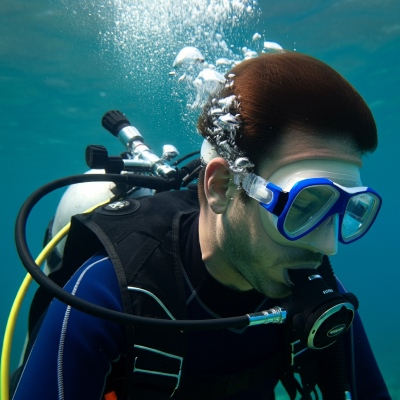
Picture this: you're eagerly descending on your first-ever wreck dive, anticipation bubbling up inside you. But as you go deeper, a sharp pain pierces your ears. You try to equalize, but nothing seems to work. The pain intensifies, turning your excitement into a full-blown panic. You signal to your buddy, abort the dive, and surface feeling defeated and disappointed.
Sound familiar? If you've ever experienced the dreaded ear squeeze, you know it can quickly turn a dream dive into a nightmare. But fear not, fellow divers! Mastering the art of equalization is key to unlocking pain-free underwater adventures.
At Dive Right In Scuba, we're passionate about helping you conquer those pesky pressure changes and dive with confidence. So let's pop those ear pressure blues and explore the world of equalization, from the science behind it to tips and tricks for mastering this essential skill.
The Science of Equalization (No, It's Not Just Magic)
Before we dive into the techniques, let's take a quick science lesson. As you descend underwater, the water pressure increases, compressing the air spaces in your ears. This creates a vacuum-like feeling, and if not addressed, can lead to a painful ear squeeze or even a ruptured eardrum.
Enter the Eustachian tube, your ear's trusty pressure equalizer. This tiny canal connects your middle ear to the back of your throat, allowing you to balance the pressure on both sides of your eardrum. By opening your Eustachian tube, you can let air into your middle ear, matching the increasing pressure outside.
Sounds simple enough, right? Well, sometimes our bodies have other plans. Congestion, allergies, or even anatomical differences can make equalization tricky. But don't worry, with a bit of practice and the right techniques, you can become an equalization champion!
Mastering the Maneuvers: Equalization Techniques
Think of equalization techniques as your underwater dance moves - a little practice, and you'll be grooving to the rhythm of pressure changes in no time. Here are a few popular methods:
- Valsalva Maneuver: This is the most common technique, and you probably learned it in your Open Water course. Gently pinch your nose closed and try to gently blow air through your nose. You should feel a "pop" or a release of pressure in your ears.
- Toynbee Maneuver: If the Valsalva doesn't work for you, try the Toynbee maneuver. Pinch your nose closed and swallow. This action helps to open your Eustachian tubes and equalize the pressure.
- Frenzel Maneuver: This technique is a bit more advanced, but it can be very effective for those who struggle with the Valsalva or Toynbee. Close the back of your throat, as if you're about to make a "K" sound, and then use your tongue to push air up towards your Eustachian tubes. It might take some practice, but once you get the hang of it, it can be a game-changer.
- Other Techniques: If none of these methods work for you, there are a few other tricks you can try, like yawning or gently wiggling your jaw. Some divers also find that tilting their head slightly or looking up towards the surface can help.
Remember, practice makes perfect! Start practicing equalization on land and in shallow water before attempting deeper dives. And if you're still struggling, don't be afraid to ask your dive instructor for help.
Troubleshooting: When Equalization Gets Tricky
Even with the best techniques, equalization can sometimes be a challenge. Here are a few tips for troubleshooting common issues:
- Congestion and Allergies: If you're feeling congested or have allergies, it can be harder to equalize. Try using a decongestant or antihistamine before your dive, and consider using a nasal spray to clear your sinuses.
- Ear Pain: If you experience ear pain during a dive, stop descending immediately and ascend slightly until the pain subsides. Try to equalize again, and if you're still unable to do so, end the dive and seek medical advice if necessary.
- Reverse Block: This occurs when air gets trapped in your middle ear during ascent, causing pain and discomfort. To relieve a reverse block, try to yawn, swallow, or perform the Valsalva maneuver gently.
Dive Right In Scuba: Your Equalization Experts
At Dive Right In Scuba, we understand that mastering equalization is key to a safe and enjoyable diving experience. Our experienced instructors can provide personalized guidance and tips on equalization techniques, and we offer a variety of courses to help you build your skills and confidence underwater.
So, if you're struggling with ear pain or just want to improve your equalization skills, don't hesitate to reach out. We're here to help you dive deeper, explore further, and experience the underwater world without any discomfort.
Clear Ears, Happy Dives
Equalization might seem like a minor detail, but it's a crucial skill for every diver. By mastering the techniques and understanding the science behind it, you can avoid ear pain, prevent injuries, and enjoy countless hours of underwater exploration.
So, practice those maneuvers, listen to your body, and don't be afraid to ask for help. With a little effort and the right guidance, you'll be equalizing like a pro in no time!
Remember, diving is all about fun and adventure. So, keep those ears clear, stay safe, and let the underwater world amaze you!
